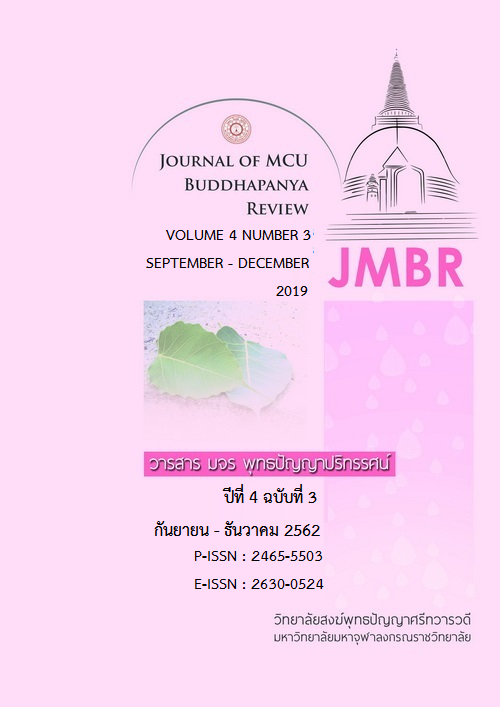Relationship Marketing in an Open University
คำสำคัญ:
Trust, Satisfaction, Commitment and Loyaltyบทคัดย่อ
The purpose of this study was to use relationship marketing theory to investigate empirically students’ loyalty intentions of Sukhothai Thamathirat Open University’s students by using three factors: trust, satisfaction and commitment. This study investigated whether the relationships among trust, satisfaction and commitment serve as the key variables of loyalty intentions.
The instrument was a questionnaire composed of the measurement items relate to the constructs of trust, satisfaction, commitment and loyalty intentions. The population of the study is 172 current bachelor degree students of Sukhothai Thammathirat Open University who are the leaders of students’ associations 77 provinces. The questionnaire was distributed on August 31, 2018 while the leaders of students’ associations were staying on campus 3 days during August 30 until September 1 to join the activities of Sukhothai Thammathirat Open University for the leaders of students’ associations: training, presentation and next year planning. The 148 questionnaires were returned. Correlation and regression were used for data analysis the relationships of trust, satisfaction commitment and loyalty intentions.
The results of this study concluded that there is a relationship of trust, satisfaction, commitment and loyalty intentions. Based on the results from this study, administrators can achieve the goal of enhancing student loyalty by developing key customer relationship attributes: trust, commitment and satisfaction. Attention to these key points will lead to significantly improved competitive advantage in education services.
เอกสารอ้างอิง
Cha, J. and Borchgrevink, C. (2018). Customers’ Perceptions in Value and Food Safety on Customer Satisfaction and Loyalty in Restaurant Environments: Moderating Roles of Gender and Restaurant Types, Journal of Quality Assurance in Hospitality & Tourism.
Chandrashekaran, M., Rotte, K.., Tax, S., and Grewal, R. (2007). Satisfaction Strength and Customer Loyalty. Journal of Marketing Research, 44, 1, 153-163.
Dick, A. and Basu, K. (1994). Customer loyalty: Toward an integrated conceptual Framework. Journal of Academy of Marketing Science, 22 (2), 99-113.
Garbarino, E. and Johnson, M. (1999). The Different Roles of Satisfaction, Trust and Commitment in Customer Relationships. Journal of Marketing, 63, 70-87.
Hennig-Thurau, T., Gwinner, K.., and Gremler, D. (2002). Understanding Relationship Marketing Outcomes, An Intration of Relationsl Benefits and Relationship Quality. Journal of Service Research, 4 (3), 230-246.
Mahmoud, M., Hinson, R. and Adika, M. (2018). The Effect of Trust, Commitment, and
Conflict Handling on Customer Retention: The Mediating Role of Customer Satisfaction. Journal of Relationship Marketing, 17(4), 257-276,
Moorman, C., Deshpande, R. and Zaltman, G. (1993). Factor affecting trust in market research relationships. Journal of Marketing, 57(1), 81-101.
Morgan, R.M. and Hunt, S.D. (1994). The Commitment-Trust Theory of Relationship Marketing. Journal of Marketing, 58, 20-38.
Oliver, R.L. (2010). Whence customer loyalty?. Journal of Marketing, 63, 33-44.
Rather, R.A. (2019). Consequences of Consumer Engagement in Service Marketing: An Empirical Exploration. Journal of Global Marketing, 32,116-135.
Reichheld F. F. (2003), The One Number You Need to Grow. Harvard Business Review, 46-54.
Schirmer, N., Ringle, C., Gudergan, S. and Feistel, M. (2018). The Link Between Customer Satisfaction and Loyalty: The Moderating Role of Customer Characteristics. Journal of Strategic Marketing, 26(4), 298-317.
Singh, G., Singh, I. and Vij, S. (2017). Antecedents and Consequences of Customer Loyalty: A Conceptual Model. International Journal of Applied Business and Economic Research, 15(23), 237-251.



